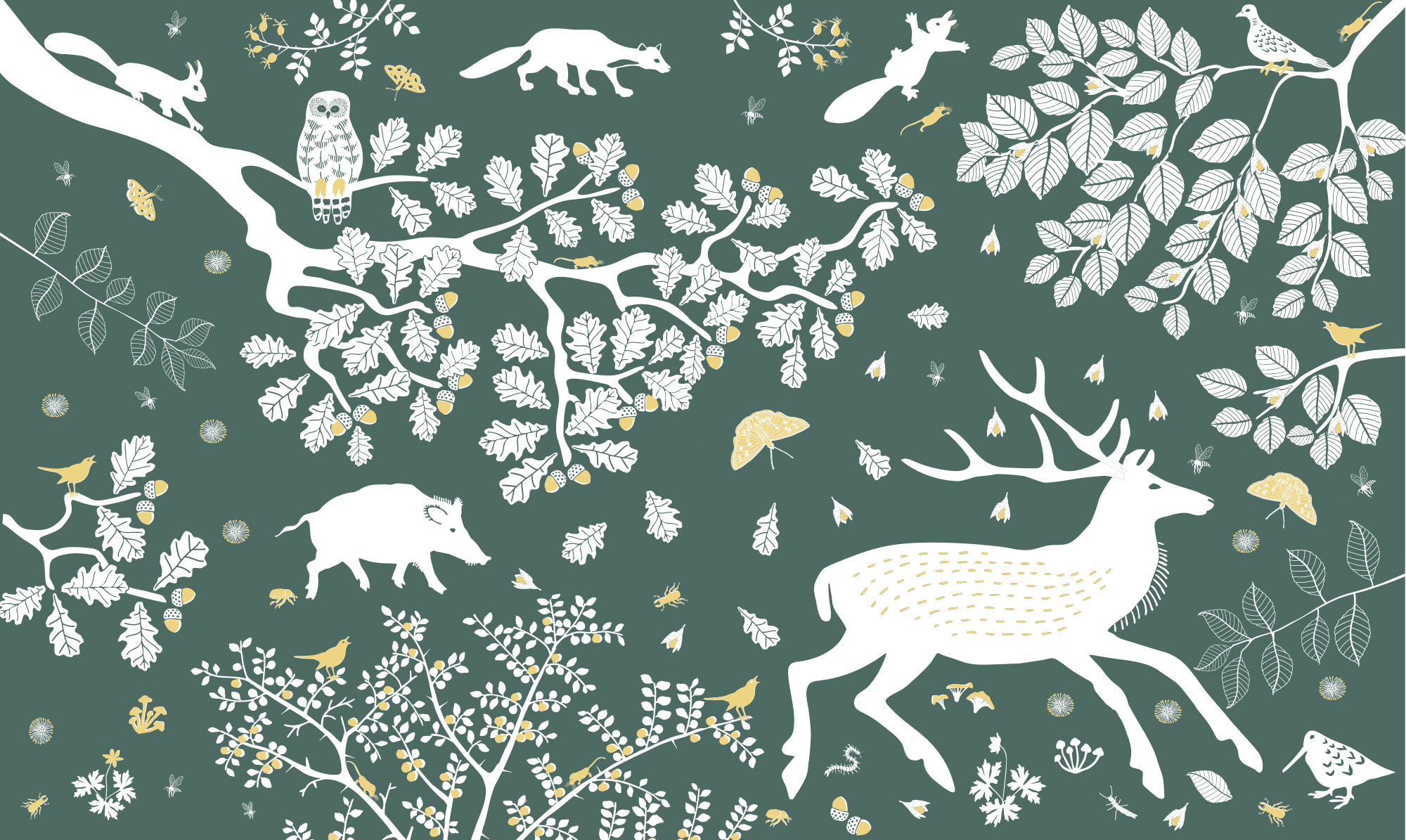This blog is about what I have learned about the British environment and how it informs the design of my Wilding Environment Print.
- The Great Un-wild
- Un-wilding
- Re-wilding
You can learn more by following the links and by downloading the reading list I have put up in the Community part of this website.
2. Un-wilding
“any species that takes a hit passes on the pain to all that like to eat it.”
Mike Burners Lee, There is No Planet B
When I first visited Britain, I felt as if there was something wrong (1. The Great Un-wild). This was because I grew up in quite a wild part of southern Africa. I didn’t understand why I sensed this gaping hole. In the last year I’ve begun to grasp why. This is what I have learned:
Chemicals
Since World War II, the use of chemical fertilisers, pesticides and herbicides at an industrial level have increased agricultural yields exponentially. But this use of synthetic chemicals has compromised the wild flora, insects, birds, small animals and soil organisms at a level never known to nature, and a wide range of of plants and animals have taken a hit.
Clearing Land
With the power of big machinery, woodland, hedgerows, wetland, and scrubland have been cleared, drained, ploughed, and fertilized to increase outputs. This human capability has pushed wild habitats into isolated pockets or destroyed them.
Plant species have narrowed, and so have the animals, birds and insects that depend on them. Purple Emperor butterflies, for example, nearly disappeared because of the clearance of sallow, a species of willow that they require when they are caterpillars. Nightingale numbers have plummeted because scrubland, particularly blackthorn, was only spared in the remaining hedgerows, which are brutally machine flailed every year.
Loss of Meadows
With the clearing of land, use of chemicals and other modern farming practices, Britain has lost 97% of its species rich meadows in the last 100 years. Meadows were full of diverse grass and flower species that supported insects, like bees and butterflies, birds and small animals and maintain good soil structure.
Woodland Loss and Wrong Management
Apart from the loss of 40% of broadleaf woodlands (i.e. not conifers) in the last century, the way woods actually work co-operatively was not understood. Micorrhizal fungi, which live in the ground in tree root systems thriving on rotting organic matter, are key to creating a healthy collaborative wood wide web through which resources are exchanged. But this was not seen as a resource.
Until not long ago dead trees and branches were systematically removed to reduce the ‘threat’ of fungal diseases and commercially less valuable tree species were removed.
This form of management weakened the wood wide web and the habitat for ground organisms, insects, and birds; in effect the conditions for biodiversity and healthy trees. Insects, birds and small animals had less to eat and numbers fell.
The practice of coppicing (felling trees to create a stool that sends up shoots to cut for firewood and small timber projects) began to diminish 200 years ago when coal became the main fuel source. With less coppicing, less light has reached woodland floors and many plants and insects have been unable to thrive, which has had a negative consequence for all the birds and animals that like to eat them such as caterpillars, woodcock and hedgehogs.
Monoculture
Because of large machinery, it has become possible to cultivate large areas with the same crop. This large-scale farming goes hand in hand with the use of chemicals, with soil degradation and the loss of biodiversity. Commercial forests have been planted in this way too, resulting in dense, dark, lifeless green deserts.
Pasture Improvement
Through pasture ‘improvement’ for increasing sheep and cattle outputs, plants with high grazing value, supported by fertilizers, have choked out meadow diversity along with the mycorrhizal soil fungi, vital to soil and plant health.
Burning Grouse Moors
Shooting grouse on grouse moors in upland Britain is a business. To plump up the birds, the heather gets burned to send out new shoots for them to eat. But burning the heather on grouse moors degrades peat land, releases global warming gases, increases flood risks and reduces biodiversity.
Commercial Peat Digging
Peat, which takes thousands of years to build, is a vital carbon sink. It absorbs the carbon dioxide from the fossil fuels we burn. Yet in Britain people continue to harvest peat compost at an industrial scale, to sell to gardeners and whiskey makers.
If you go to YouTube and search for peat cutting, you will see very graphically how peat cutting works.
Summary of Habitat Losses
40% of broadleaf woodland
200,000 miles of hedgerows
95% of lowland bogs / wetland
97% flower rich meadows
Note
In this blog I have shared with you the things that I have been learning. You will be able to see that my design of Wilding has been informed by these things. I am not an expert at all; but I am committed to sharing what I learn. The inverse of that is that I want to learn what I don’t know. So if you want to share your own knowledge or correct something, please feel free to comment or contact me.
